Actar's insecticidal agent is intended for pest control in gardens and vegetable gardens, however, today it is also successfully used for indoor plants susceptible to attack by parasites. The drug has a number of advantages over many similar drugs, which in practice demonstrate its high effectiveness. The product is completely decomposed in the soil, does not have a pungent odor, acts for 30-40 days and has little toxicity to humans and animals.
The use of Actara for preventive purposes is permissible once a month. The insecticide can be used at any time of the year and in any weather conditions, since its chemical formula is resistant to sunlight and does not change activity depending on different levels of air humidity.
Content
Chemical properties and composition of Actara
The drug belongs to systemic insecticides. Penetrating into the branched vascular system of plants, the drug becomes fatal to the insect.
The main properties of Actara:
- rapid distribution of vegetative organs of the plant (roots, stems and leaves);
- does not have a specific pungent and unpleasant odor, like other chemicals;
- well soluble in warm water;
- is a continuous action insecticide, that is, it protects the plant from various pests (aphids, scale insects, mealybugs, thrips, whiteflies, sciarids and other insects);
- the use of the drug is not provided against the spider mite, but nevertheless, some flower growers still note a positive effect;
- active at high temperatures, high humidity and dry air;
- resistant to sunlight;
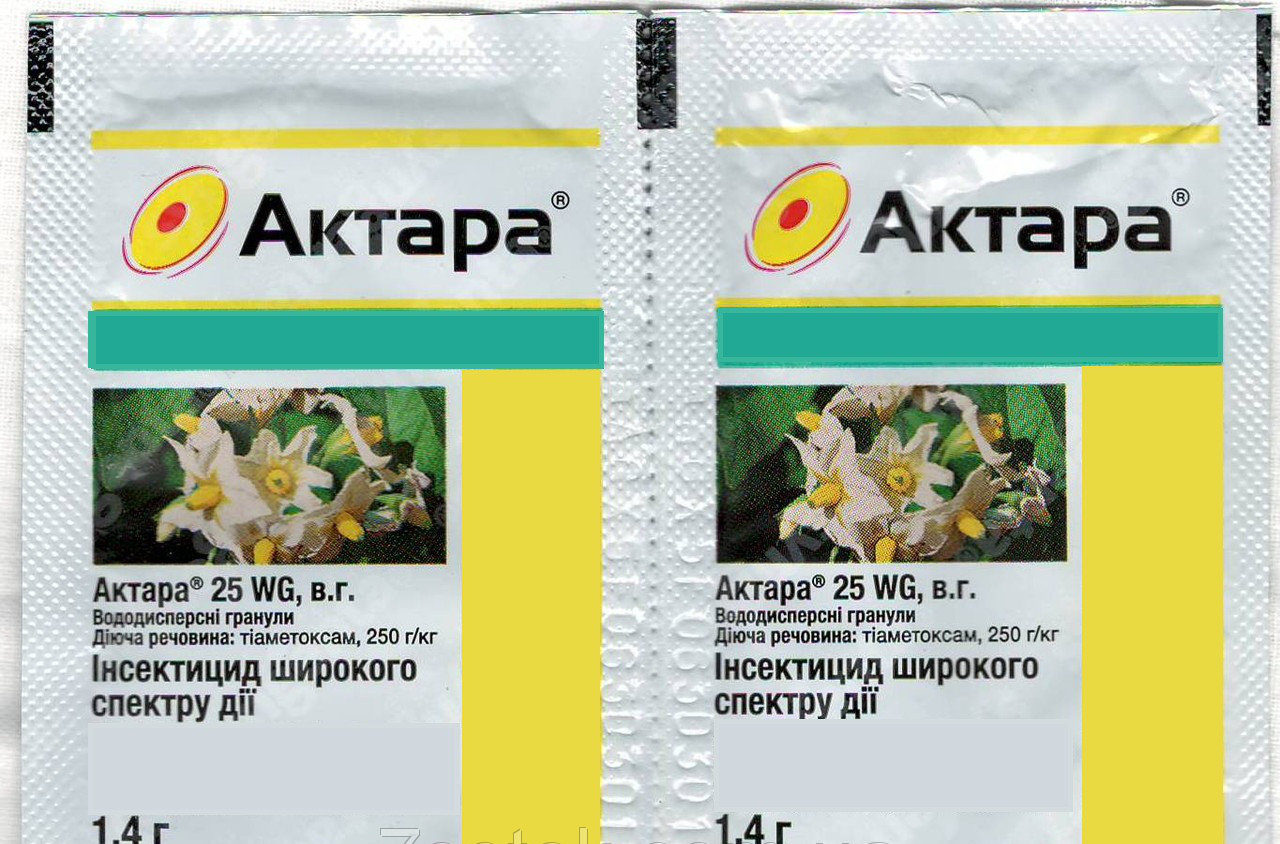
Actara properties - has a long period of residual effect (when applied directly to the soil substrate - 40-60 days, when sprayed - 15-28 days);
- compatible with other insecticides, fungicides, as well as stimulants and plant growth regulators (with the exception of products with an alkaline reaction - Bordeaux liquid, lime fertilizers, various soaps, etc.);
- does not accumulate in bulbs, tubers and fruits;
- has low phytotoxicity (has a weak toxic effect on the plant, practically without suppressing its growth and development);
- possible resistance (resistance of the organism of pests with repeated use of Actara, caused by addiction to the active substance), therefore, it is recommended to alternate the drug with other effective insecticides of a similar orientation;
- does not affect pupae, eggs, and non-feeding adults (adults).
For home floriculture, the product is produced in special foil bags containing 4 g of water-soluble granules. The active ingredient of Actara is thiamethoxam, which enters the body of pests mainly through the digestive system. Within 25-60 minutes, you can observe the first signs of its action. For a day, thiamethoxam can spread to all organs of the plant, and if the flower is large, then within 2-3 days.
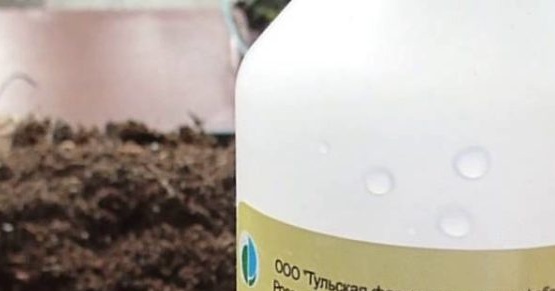 You may be interested in:
You may be interested in:Instructions for use Actara for indoor plants
The drug is used in accordance with the instructions for use for watering and spraying indoor plants. In addition, seedling soaking and seed treatment are practiced. First of all, you need to prepare a solution and calculate the dosage, and then proceed with the introduction of Actara.
Solution preparation and dosage calculation
Storage of the finished solution is contraindicated. Therefore, it is recommended to do it in an amount that will be used on the same day. Immediately on the eve of use, thoroughly shake the solution in a tightly closed container.
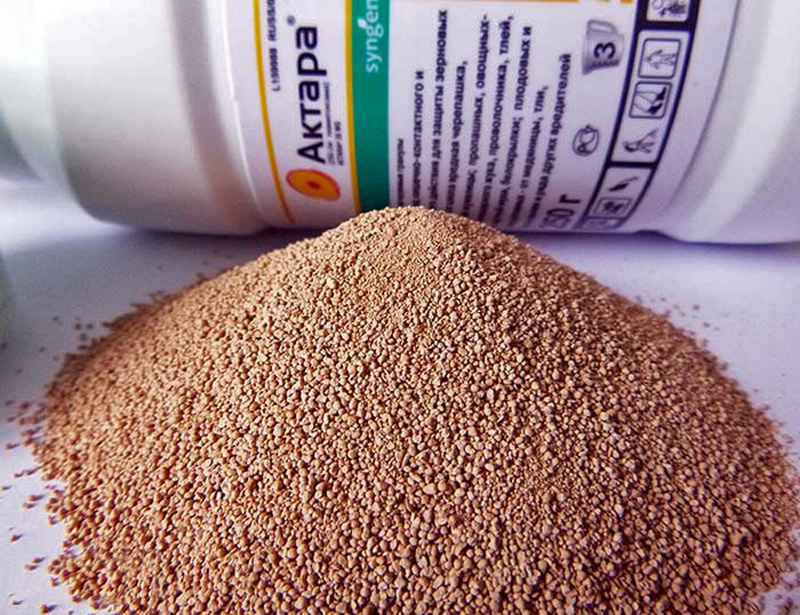
Pellets should be poured into it and be sure to stir with a stick until completely dissolved. You can first dissolve in a glass, and then mix its contents in a container with a large volume of liquid, or immediately prepare the optimal amount of the mixture in the spray tank.
When processing indoor crops by finely dispersed spraying, 4 g of the product must be diluted in 5 l of water. This volume is enough for high-quality processing of 100-120 small plants, that is, a whole greenhouse. The average consumption of the suspension is up to 10 l / 10 sq. m. You can make a smaller amount of solution, observing the proportional ratio of water and this drug.
For each pest, it is necessary to select the appropriate dose of insecticide:
| Pest | Dose of the drug |
|---|---|
| Aphid | 4 g per 5 l |
| Whitefly | 1 g per 1 liter |
| Scaffolds and false shields | 4 g per 5 l |
| Thrips | 4 g per 5 l |
| Mealybug | 1.4 g per 2 l |
For the initial treatment against the spider mite, you will need 8 g of the drug per 5 liters of water.
For watering, only 1 g of Actara per 10 liters of water will be required, which will provide protection to 250 plants. Average consumption - up to 2 l / 100 sq. m
Watering the ground
Watering the soil is considered more productive, since Actara is a systemic insecticide. During the procedure, do not pour the solution on the root neck of the plant. In case of significant pest damage, this method of introducing an insecticide is recommended to be combined with spraying.
| Pest | Number and regularity of irrigation |
|---|---|
| Spider mite | 4-5 with an interval of 1 week (if the pest reappears, the drug will not help) |
| Scaffolds and false shields | 2-3 in 10 days |
| Mealybug | 2-4 with an interval of 10-12 days |
| Mushroom mosquitoes and soil flies | 1 (if you need more, then after 1 week) |
Spraying foliage
The effect of spraying is weaker than that of watering, however, the effect of the drug begins much faster. It is recommended to spray the suspension with a fine sprayer, 25-30 cm away from the plant affected by the pest. It is necessary to spray all the parts, not forgetting the back of the leaf plates.
| Pest | The number and regularity of treatments |
|---|---|
| Whitefly, aphids, thrips | 3 in 7 days |
| Scaffolds and false shields | 2-3 in 10 days |
| Mealybug | 2-4 in 10-12 days |
Processing must be carried out before the flowering phase of the plant, preferably in the morning and evening hours. If the procedure takes place outdoors, then in calm weather it is recommended to do this outdoors. It is not recommended to bring flowers into the room immediately. It is allowed to spray in the bathroom, but in no case in the living room (especially in the bedroom).
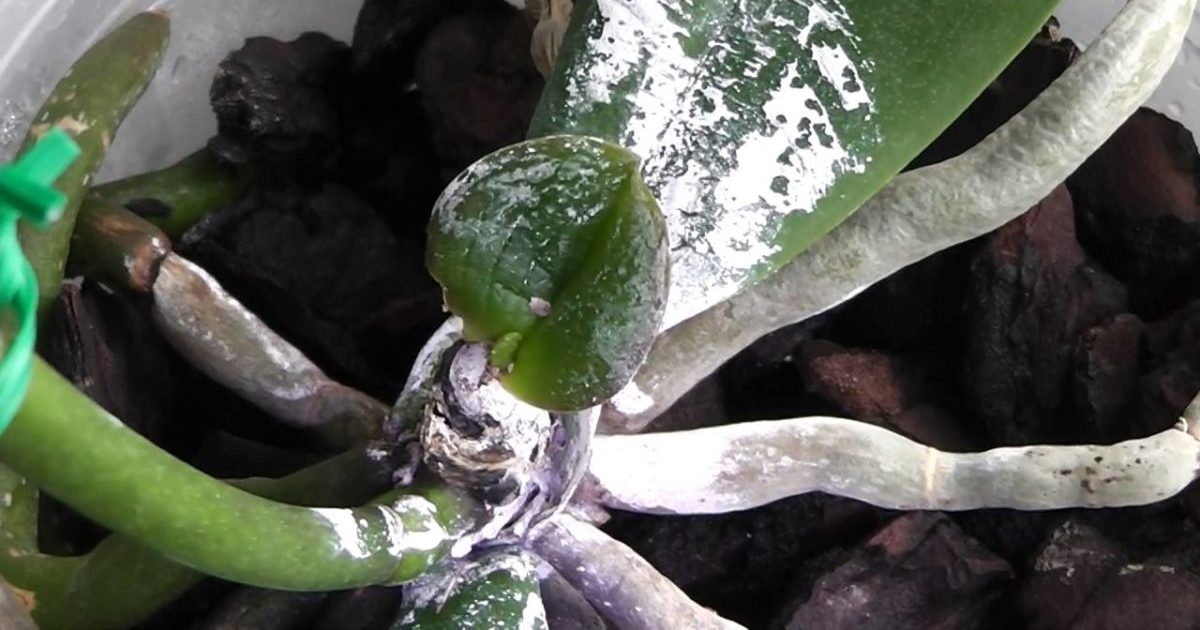 You may be interested in:
You may be interested in:Possible harm to the plant and man and how to minimize it
If you follow the instructions for use of the drug and do not exceed the permissible concentration of Actara, then it will not cause any harm to indoor plants, even gentle and capricious orchids. With an excessively large introduction of Actara, sensitization of the plant is possible (increased sensitivity). In this case, the dose should be reduced.
For humans and animals, Aktara is moderately toxic and belongs to the III (medium or moderate) hazard class. However, when handling it, you still need to:
- use a respirator or gauze bandage, rubber or silicone gloves, goggles, headgear, protective clothing and appropriate shoes;
- during the use of systemic insecticide to refrain from smoking, eating and drinking;
- thoroughly ventilate the room at all stages of work;
- work no more than 2 hours;
- refuse to use dishes in contact with the substance for food purposes;
- Store the drug at an acceptable temperature range from +10 to +35 C, out of the reach of children and animals.
After all the procedures, wash your face and hands with soap, rinse your mouth, and change into clean clothes.
The following symptoms indicate insecticide poisoning:
- decreased motor function;
- cramps
- nausea;
- vomiting
- general weakness.
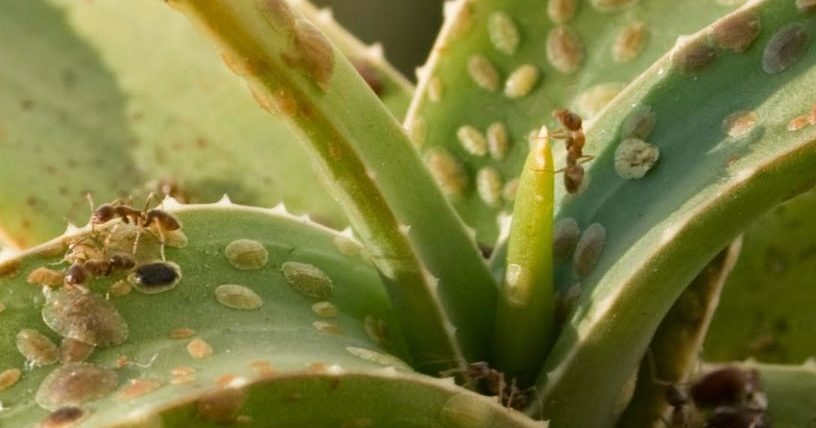 You may be interested in:
You may be interested in:If such symptoms appear, then the victim should immediately suspend work. It must be taken to fresh air, given a glass of water with activated charcoal to drink, and then an additional 3 glasses of water and cause him to vomit (only if the person is conscious). After providing the necessary first aid, you should immediately contact a medical institution.
Reviews florists on the use of Actara
In general, flower growers respond positively about the drug, emphasizing in their reviews some important points:
Alina, the owner of orchids: “Worms appeared on the peduncle of one of the orchids. I cut it off, wiped the rest with soapy water, removed pests from everywhere, but they got out again. Then I applied Aktaru in accordance with the instructions (1.5 g per 10 liters). When re-processing increased concentration - 1 sachet per 5 liters of water. After 3 times with immersion in the solution and spraying, the parasites disappeared. "
Polina, amateur flower grower: “I use Actara once every six months. When a mealybug appears, I process the flower 4 times in 4 days. Especially carefully - its central part, there are many larvae. I’m spraying even the pan. ”
Tatyana, specialist of phytosanitary inspection: “Beware of fakes of this drug. This one has a hologram with an oval in the center with the Syngenta logo. At an angle of its inclination, the Aktar logo will be visible. Fake hologram material is often dense and easily detachable. The original is peeled off with a film and part of it remains on the bag. ”
Valery, florist: “The drug copes with its tasks. Of the shortcomings, I note the high price. Actellik, Bi-58 is more economical. And Aktara is dangerous for bees. This should be taken into account when processing outdoors. ”
Actar is very effective against many pests. In practice, it is used even against a particularly malicious pest of indoor crops - the spider mite. Although a chemical is not intended for this arachnid insect.This tool acts quickly, they can be sprayed and watered the affected plant. For humans, it is not extremely dangerous. Nevertheless, the insecticide must be used carefully, observing all safety precautions.

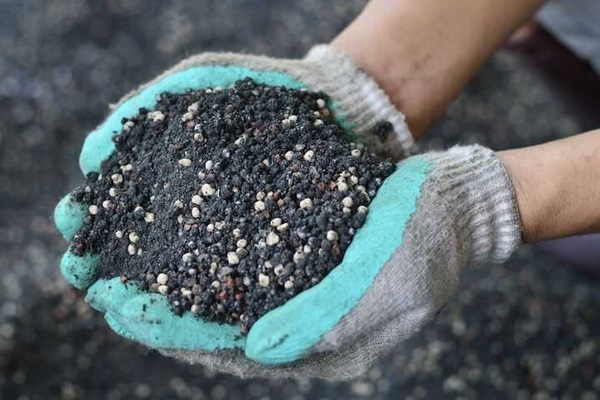
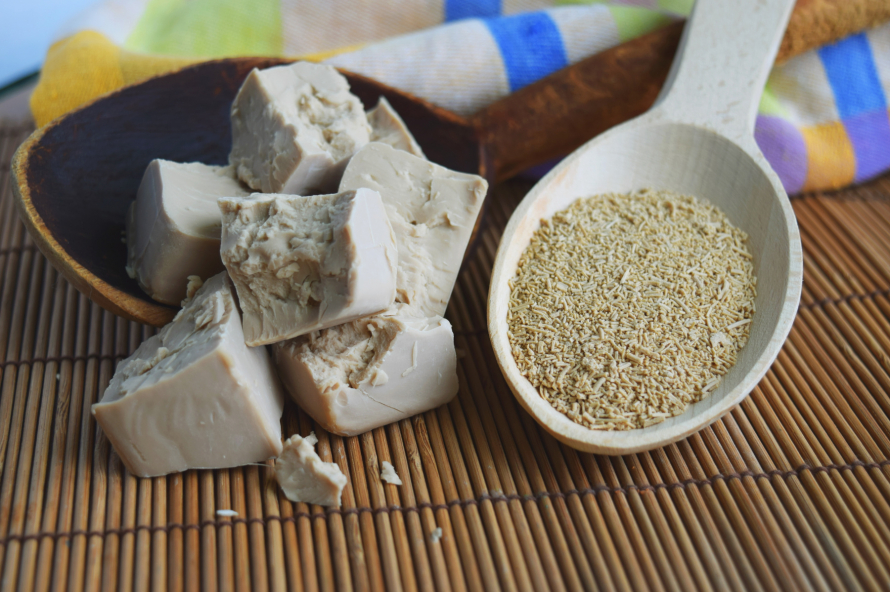

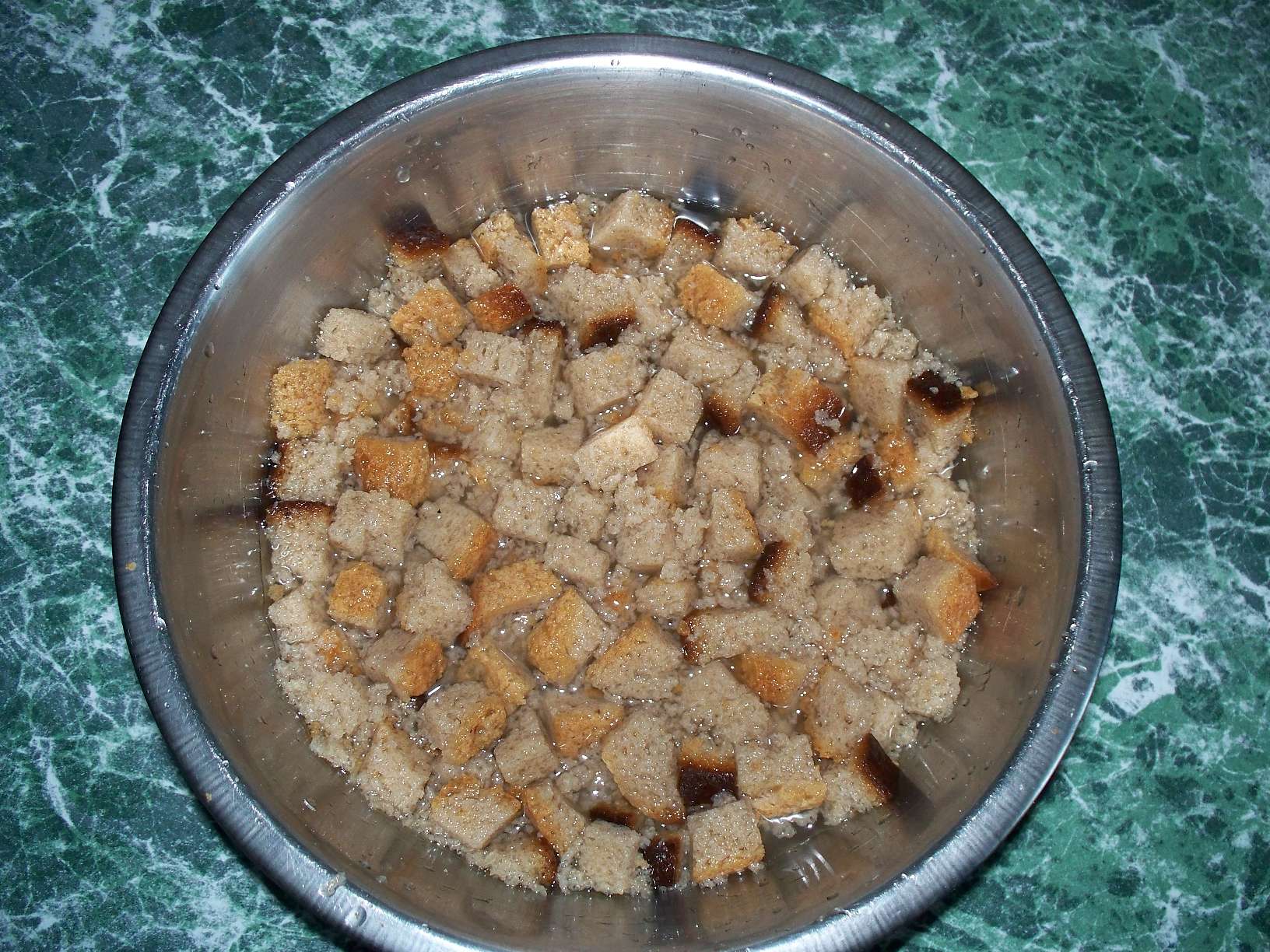 How to make bread infusion for feeding cucumbers
How to make bread infusion for feeding cucumbers Superphosphate: what is it and how to apply it
Superphosphate: what is it and how to apply it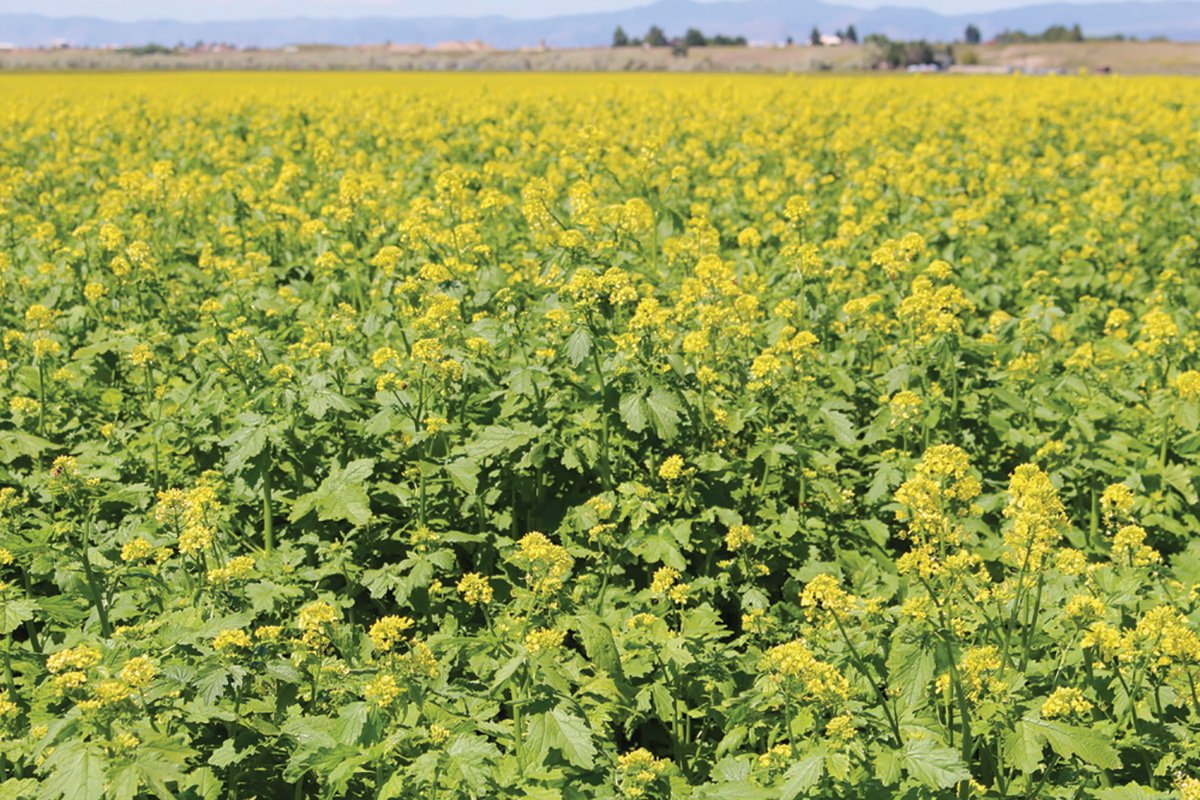 What problems can be expected from siderats?
What problems can be expected from siderats?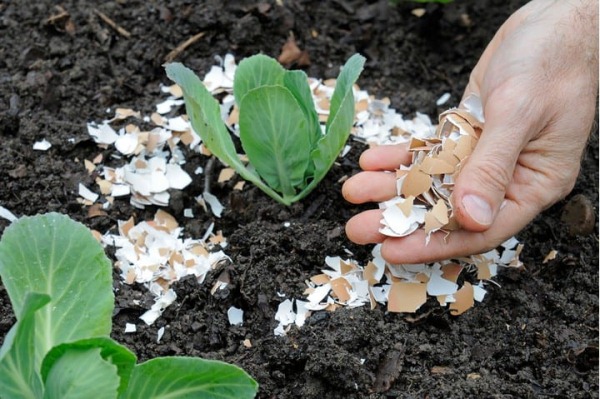 Secrets of the collection, storage and use of eggshells in the garden
Secrets of the collection, storage and use of eggshells in the garden